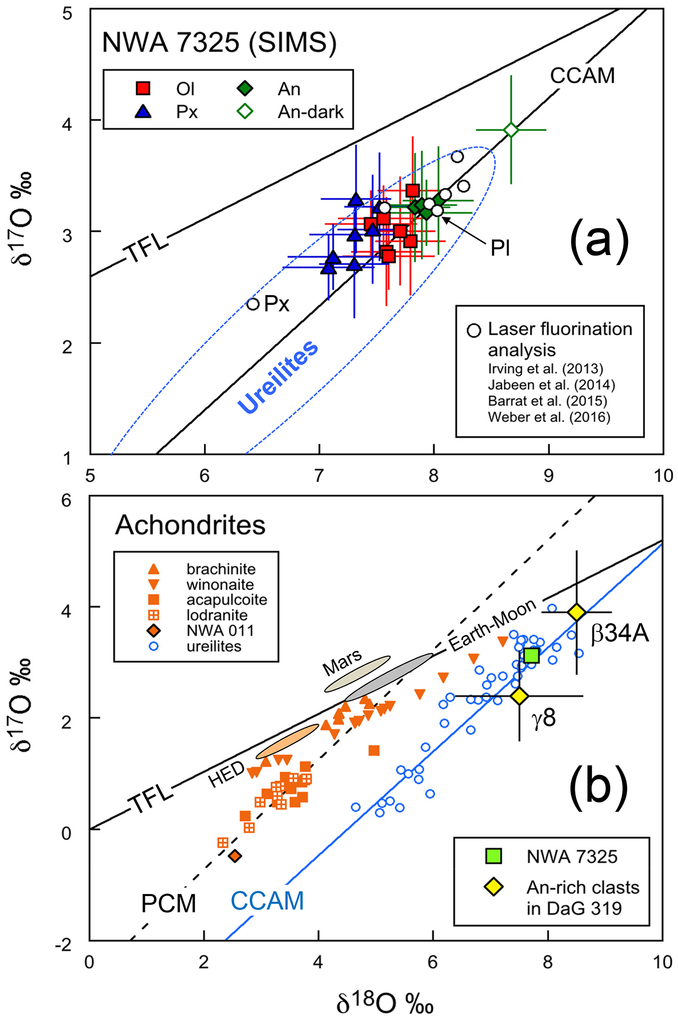Fig. 9.
(a) Oxygen three-isotope analyses of NWA 7325 minerals using SIMS. Individual data points represent single SIMS analyses. Olivine, pyroxene, and anorthite are shown as squares, triangles and diamonds, respectively. One anorthite analysis shown as open symbol hit a vein in the plagioclase and the data deviate beyond analytical uncertainty. Laser fluorination analyses of bulk chips (Irving et al., 2013; Weber et al., 2016), mineral separates (plagioclase “Pl” and pyroxene “Px”; Jabeen et al. 2014), and a bulk powder (Barrat et al., 2015) are shown as open circles. The range of ureilite bulk analyses (Clayton and Mayeda, 1996) is enclosed by dotted line. Terrestrial fractionation (TF) and carbonaceous chondrite anhydrous mineral (CCAM) lines are shown for reference. (b) Oxygen isotope ratios of bulk achondrites (Clayton and Mayeda, 1996; Yamaguchi et al., 2002; Greenwood et al., 2012) and Mg-An-rich clasts in DaG 319 polymict ureilite (Kita et al. 2004) are compared to the average value of three minerals in NWA 7325 (Table 4). Ranges of HED meteorites, Martian meteorites (Mars) and terrestrial mantle and lunar samples (Earth-Moon) are also shown as oval areas. The primitive chondrule mineral (PCM) line (Ushikubo et al., 2012) is shown along with the TFL and CCAM lines as references.

